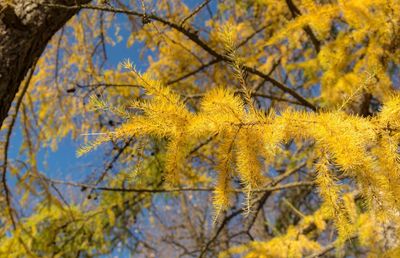Autumn Color Changing in Conifer Plants
Do coniferous plants change color? Quite a few do. Even though evergreen trees don’t lose all their needles in the fall, they don’t have the same needles for their whole lives. In autumn, most coniferous trees will shed their oldest needles, usually the ones closest to the trunk. Before dropping, these needles change color, sometimes impressively. The old needles of red pines, for instance, will turn a deep copper color before falling, while white pines and pitch pines take on a lighter, golden color. Changing conifer colors can also be the sign of total needle drop. While that may sound scary, for certain trees it’s simply a way of life. Though they’re in the minority, there are several deciduous conifers out there, such as the tamarack, bald cypress, and the larch. Just like their broad-leafed cousins, trees change color in the fall before losing all their needles.
More Conifers That Change Color
Conifer color change isn’t limited to the autumn. Some color changing in conifer plants takes place in the spring. The red-tipped Norway spruce, for example, puts out bright red new growth every spring. Acrocona spruce produces stunning purple pine cones. Other conifers start green in the spring, then change to yellow in the summer. Some of these varieties include:
“Gold Cone” juniper “Snow Sprite” cedar “Mother Lode” juniper
